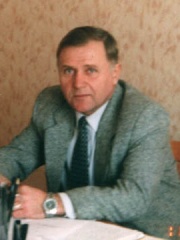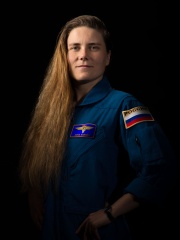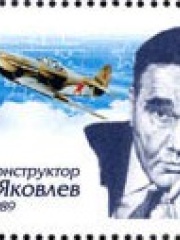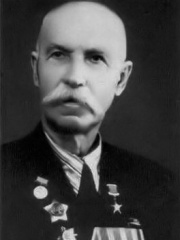

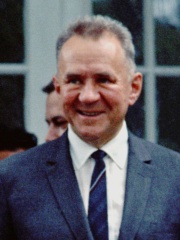
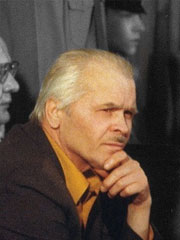

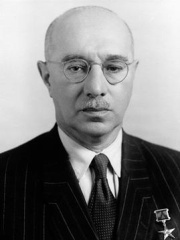

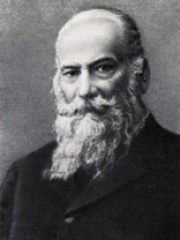
The Most Famous
ENGINEERS from Russia
This page contains a list of the greatest Russian Engineers. The pantheon dataset contains 389 Engineers, 45 of which were born in Russia. This makes Russia the birth place of the 4th most number of Engineers behind United Kingdom, and United States.
Top 10
The following people are considered by Pantheon to be the top 10 most legendary Russian Engineers of all time. This list of famous Russian Engineers is sorted by HPI (Historical Popularity Index), a metric that aggregates information on a biography's online popularity. Visit the rankings page to view the entire list of Russian Engineers.

1. Mikhail Kalashnikov (1919 - 2013)
With an HPI of 79.03, Mikhail Kalashnikov is the most famous Russian Engineer. His biography has been translated into 88 different languages on wikipedia.
Mikhail Timofeyevich Kalashnikov (10 November 1919 – 23 December 2013) was a Soviet and Russian lieutenant general, inventor, military engineer, writer, and small arms designer. He is most famous for developing the AK-47 assault rifle and its improvements, the AKM and AK-74, as well as the RPK light machine gun and PK machine gun. Kalashnikov was, according to himself, a self-taught tinkerer who combined innate mechanical skills with the study of weaponry to design arms that achieved battlefield ubiquity. Even though Kalashnikov felt sorrow at the weapons' uncontrolled distribution, he took pride in his inventions and in their reputation for reliability, emphasizing that his rifle is "a weapon of defense" and "not a weapon for offense".

2. Konstantin Tsiolkovsky (1857 - 1935)
With an HPI of 74.12, Konstantin Tsiolkovsky is the 2nd most famous Russian Engineer. His biography has been translated into 76 different languages.
Konstantin Eduardovich Tsiolkovsky (; Russian: Константин Эдуардович Циолковский, IPA: [kənstɐnʲˈtʲin ɪdʊˈardəvʲɪtɕ tsɨɐlˈkofskʲɪj] ; 17 September [O.S. 5 September] 1857 – 19 September 1935) was a Russian rocket scientist who pioneered astronautics. Along with Hermann Oberth and Robert H. Goddard, he is one of the pioneers of space flight and the founding father of modern rocketry and astronautics. His works later inspired Wernher von Braun and leading Soviet rocket engineers Sergei Korolev and Valentin Glushko, who contributed to the success of the Soviet space program. Tsiolkovsky spent most of his life in a log house on the outskirts of Kaluga, about 200 km (120 mi) southwest of Moscow. A recluse by nature, his unusual habits made him appear eccentric to his fellow townsfolk.

3. Alexei Kosygin (1904 - 1980)
With an HPI of 73.94, Alexei Kosygin is the 3rd most famous Russian Engineer. His biography has been translated into 60 different languages.
Alexei Nikolayevich Kosygin (21 February [O.S. 8 February] 1904 – 18 December 1980) was a Soviet statesman who served as the Chairman of the Council of Ministers from 1964 to 1980. Following Khrushchev's removal from power, he briefly led the Soviet Union as part of a triumvirate in the mid-to-late 1960s. Alexei Kosygin was born in the city of Saint Petersburg in 1904 to a Russian working-class family. During the Russian Civil War, he was conscripted into the labour army. After the Red Army's demobilization in 1921, he worked in Siberia as an industrial manager. In the early 1930s, Kosygin returned to Leningrad and worked his way up the Soviet hierarchy. During the Great Patriotic War (World War II), Kosygin was tasked by the State Defence Committee with moving Soviet industry out of territories soon to be overrun by the German Army. He served as Minister of Finance for a year before becoming Minister of Light Industry (later, Minister of Light Industry and Food). However, in 1952, Stalin removed Kosygin from the Politburo, thereby weakening Kosygin's position within the Soviet hierarchy. Following Stalin's death in 1953, Kosygin was appointed chairman of the State Planning Committee (Gosplan) on 20 March 1959. Later, in 1960, he was promoted First Deputy chairman of the Council of Ministers. When Nikita Khrushchev was removed from power on 14 October 1964, Kosygin and Leonid Brezhnev succeeded him as Chairman of the Council of Ministers and First Secretary of the Communist Party respectively. He then formed a triumvirate alongside Brezhnev and CC Secretary Nikolai Podgorny that led the Soviet regime in Khrushchev's place. Upon Khrushchev's ouster, Alexei Kosygin initially emerged as the Soviet Union's head of government in both name and practice. In addition to overseeing the country's economy, he assumed a preeminent role in directing its foreign policy. However, in 1968, the Prague Spring triggered a massive backlash against his reforms, thereby enabling Leonid Brezhnev to eclipse him as the dominant force within the Soviet leadership. Despite having his standing significantly weakened in the Kremlin, Kosygin was allowed by Brezhnev to remain in office until his retirement on 15 October 1980 due to bad health. He died two months later on 18 December 1980.

4. Anatoly Dyatlov (1931 - 1995)
With an HPI of 72.47, Anatoly Dyatlov is the 4th most famous Russian Engineer. Her biography has been translated into 31 different languages.
Anatoly Stepanovich Dyatlov (Russian: Анатолий Степанович Дятлов; 3 March 1931 – 13 December 1995) was a Soviet nuclear engineer who was the deputy chief engineer for the Chernobyl Nuclear Power Plant. He supervised the safety test which resulted in the 1986 Chernobyl disaster, for which he served time in prison as he was blamed for not following the safety protocols. He was released due to health concerns in 1990, and died in 1995 at the age of 64.
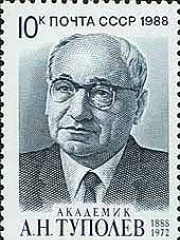
5. Andrei Tupolev (1888 - 1972)
With an HPI of 71.70, Andrei Tupolev is the 5th most famous Russian Engineer. His biography has been translated into 53 different languages.
Andrei Nikolayevich Tupolev (Russian: Андрей Николаевич Туполев; 10 November [O.S. 29 October] 1888 – 23 December 1972) was a Russian and later Soviet aeronautical engineer known for his pioneering aircraft designs as the director of the Tupolev Design Bureau. Tupolev was an early pioneer of aeronautics in Russia and served as a protégé of Nikolay Zhukovsky. Tupolev designed or oversaw the design of more than 100 types of civilian and military aircraft in the Soviet Union over 50 years, some of which set 78 world records. Tupolev produced many notable designs such as the Tu-2, Tu-16, Tu-95, and Tu-104, and the reverse engineered Tu-4. Tupolev was highly honoured in the Soviet Union and awarded various titles and honours including the Hero of Socialist Labor three times, Order of Lenin eight times, Order of the Red Banner of Labour two times, made an academician of the Russian Academy of Sciences in 1953, and a Colonel-General of the Soviet Air Force in 1968. Tupolev was also honoured outside the Soviet Union as an honorary member of the British Royal Aeronautical Society and the American Institute of Aeronautics and Astronautics in recognition of his work. In 2018, Vnukovo International Airport was formally renamed to Vnukovo Andrei Tupolev International Airport in his honour.

6. Sergey Ilyushin (1894 - 1977)
With an HPI of 68.17, Sergey Ilyushin is the 6th most famous Russian Engineer. His biography has been translated into 44 different languages.
Sergey Vladimirovich Ilyushin (Russian: Сергей Владимирович Ильюшин; 30 March [O.S. 18 March] 1894 – 9 February 1977) was a Soviet aircraft designer who founded the Ilyushin aircraft design bureau. He designed the Il-2 Shturmovik, which made its maiden flight in 1939. It is the most produced warplane, and remains the second most-produced aircraft in history, with some 36,000+ built, behind the US Cessna 172.

7. Mikhail Gurevich (1892 - 1976)
With an HPI of 66.29, Mikhail Gurevich is the 7th most famous Russian Engineer. His biography has been translated into 37 different languages.
Mikhail Iosifovich Gurevich (Russian: Михаи́л Ио́сифович Гуре́вич) (12 January 1893 [O.S. 31 December 1892] – 12 November 1976) was a Soviet aircraft designer who co-founded the Mikoyan-Gurevich military aviation bureau along with Artem Mikoyan. The bureau is famous for its fighter aircraft, rapid interceptors and multi-role combat aircraft which were staples of the Soviet Air Forces throughout the Cold War. The bureau designed 170 projects of which 94 were made in series. In total, 45,000 MiG aircraft have been manufactured domestically, of which 11,000 aircraft were exported. The last plane which Gurevich personally worked on before his retirement was the MiG-25.

8. Viktor Belenko (1947 - 2023)
With an HPI of 65.86, Viktor Belenko is the 8th most famous Russian Engineer. His biography has been translated into 25 different languages.
Viktor Ivanovich Belenko (Russian: Виктор Иванович Беленко; February 15, 1947 – September 24, 2023) was a Soviet-born American aerospace engineer and pilot who defected in 1976 to the West while flying his MiG-25 "Foxbat" jet interceptor and landed in Hakodate, Japan. George H. W. Bush, the Director of Central Intelligence at the time, called the opportunity to examine the plane up close an "intelligence bonanza" for the West. Belenko later became a U.S. aerospace engineer.

9. Nikolay Zhukovsky (1847 - 1921)
With an HPI of 65.60, Nikolay Zhukovsky is the 9th most famous Russian Engineer. His biography has been translated into 40 different languages.
Nikolay Yegorovich Zhukovsky (Russian: Никола́й Его́рович Жуко́вский, IPA: [ʐʊˈkofskʲɪj]; 17 January [O.S. 5 January] 1847 – 17 March 1921) was a Russian scientist, mathematician and engineer, and a founding father of modern aero- and hydrodynamics. Whereas contemporary scientists scoffed at the idea of human flight, Zhukovsky was the first to undertake the study of airflow. He is often called the Father of Russian Aviation. The Joukowsky transform is named after him, while the fundamental aerodynamical theorem, the Kutta–Joukowski theorem, is named after both him and German mathematician Martin Kutta.
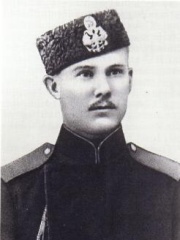
10. Vasily Degtyaryov (1880 - 1949)
With an HPI of 63.99, Vasily Degtyaryov is the 10th most famous Russian Engineer. His biography has been translated into 26 different languages.
Vasily Alekseyevich Degtyaryov (Russian: Васи́лий Алексе́евич Дегтярёв; 2 January 1880, Tula – 16 January 1949, Moscow) was a Soviet and Russian engineer who specialized in weapons design. He was awarded the title of Hero of Socialist Labour in 1940.
People
Pantheon has 45 people classified as Russian engineers born between 1797 and 1984. Of these 45, 2 (4.44%) of them are still alive today. The most famous living Russian engineers include Viktor Kozin, and Anna Kikina. The most famous deceased Russian engineers include Mikhail Kalashnikov, Konstantin Tsiolkovsky, and Alexei Kosygin.
Living Russian Engineers
Go to all RankingsDeceased Russian Engineers
Go to all RankingsMikhail Kalashnikov
1919 - 2013
HPI: 79.03
Konstantin Tsiolkovsky
1857 - 1935
HPI: 74.12
Alexei Kosygin
1904 - 1980
HPI: 73.94
Anatoly Dyatlov
1931 - 1995
HPI: 72.47
Andrei Tupolev
1888 - 1972
HPI: 71.70
Sergey Ilyushin
1894 - 1977
HPI: 68.17
Mikhail Gurevich
1892 - 1976
HPI: 66.29
Viktor Belenko
1947 - 2023
HPI: 65.86
Nikolay Zhukovsky
1847 - 1921
HPI: 65.60
Vasily Degtyaryov
1880 - 1949
HPI: 63.99
Alexander Sergeyevich Yakovlev
1906 - 1989
HPI: 63.66
Fedor Tokarev
1871 - 1968
HPI: 63.47
Overlapping Lives
Which Engineers were alive at the same time? This visualization shows the lifespans of the 25 most globally memorable Engineers since 1700.

